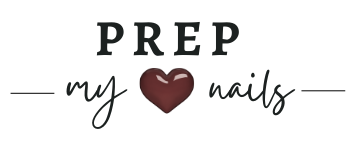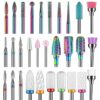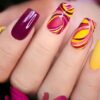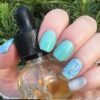Pedicures are among the most relaxing ways to keep your feet healthy and beautiful, but if you’re not cautious, they can also be one of the most damaging.
Before you go rushing off to your next pedicure appointment, read these tips on how to get the best pedicure possible while avoiding any unnecessary damage to your feet. Also included are some beneficial tips on how to get a pedicure at home, something that will save you cash and stress in the long run!
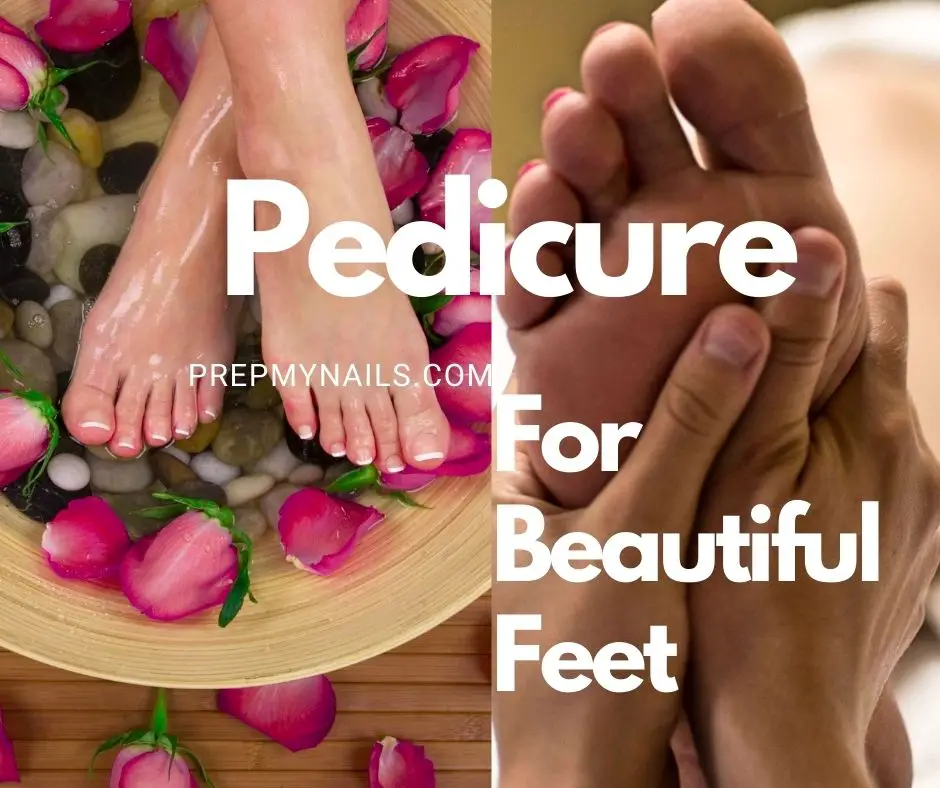
Pedicures are great, but they’re not without their risks, and there are some things you should know before getting one done.
If you fail to take every necessary step to stay safe while getting your pedicure, you could quickly end up with an infection or another health problem that you could avoid.
This article will tell you everything you need to know about pedicures, from their benefits to the typical risks that come with them, so keep reading to learn more about this popular beauty treatment.
What Is Pedicure?
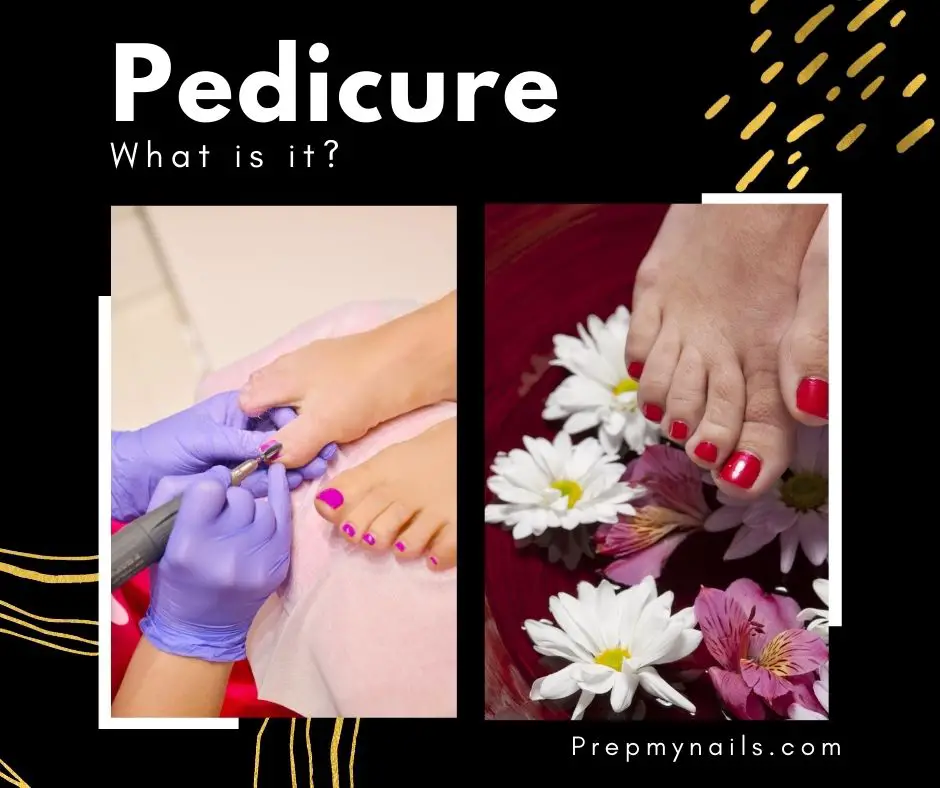
A pedicure is a nail treatment that uses various files, polishes, and creams to treat and beautify your toes. A basic pedicure involves:
- Filing down rough spots on your nails.
- Massaging your feet with creams or oils.
- Rubbing them with towels.
- Painting them with polish.
Many pedicures are offered in salons or spas, but you can also do it at home. You can use an emery board—similar to those used for fingernails—to remove calluses from around your toes after bathing them.
It should help you avoid painful ingrown nails caused by thickened skin that has grown into nail beds beneath them. However, it’s essential not to overdo it when removing dead skin cells; if you rub too hard, it may damage surrounding tissues.
Most experts recommend using pumice stones instead of scrapers because they’re gentler on your soles. For regular pedicures at home, try soaking your feet in warm water with a mixture of vinegar and lemon juice added before scrubbing off dead skin cells and trimming any unwanted cuticles as needed.
Read: 29 Must-Know Dos-Don’ts, Etiquette, Tips Before Pedicure
Where Did Pedicure Originate From?
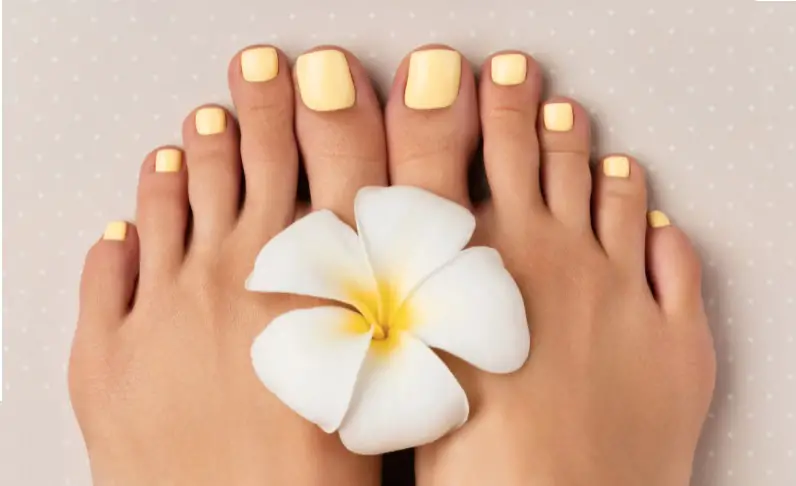
Basic pedicure originated from India and became popular in the West during the Victorian era. At the time, everyone expected women to be clean and presentable, and a good pedicure was one way to achieve this. It was also a way to keep women’s feet healthy and attractive.
In India, people believe that clean feet equal a healthy body, and as a result, many Indians still enjoy a traditional pedicure. There are even so-called “foot spas” in India that offer various services, including manicures, pedicures, and facials.
Indian pedicure techniques are often more advanced than those in the West, and they use more moisturizing and fragrant products. Today, the popularity of pedicures continues to grow both in the West and in India.
Who Should Have Pedicures?
Your pedicurist can help you figure out what type of pedicure will work best for your needs.
If you have corns, calluses, or an ingrown toenail, have all these issues checked by your podiatrist before getting a pedicure. If you have diabetes, be sure to tell your pedicurist so they can file and cut your nails accordingly.
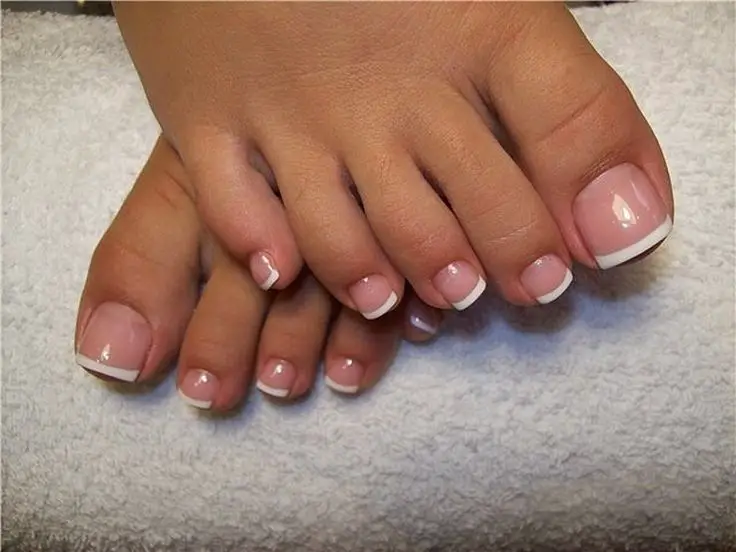
Similarly, if you wear orthopedic shoes (such as those with ankle supports), let your nail artist know so they can make appropriate accommodations during and after treatment.
Finally, if you are overweight or obese—or worry about gaining weight—it’s probably not a good idea to get regular pedicures. Or at least don’t drink champagne!
Weight gain is one of many potential complications associated with frequent treatments.
Are Pedicures Good For You?
It’s essential to determine if your feet can handle pedicures before getting one. If you have diabetes, circulatory issues, or any history of blood clots, talk to your doctor before getting a pedicure. A lack of circulation can increase infection risk and cause permanent nerve damage, which isn’t fun. In most cases, though, pedicures are good for you and safe for everyone—especially when you take good care of your feet between visits. That said, some rules of thumb can help keep you safe in salons:
- Limit your visit to once every two weeks. It is about as often as you should see a professional waxing or threading (not plucking) hair from sensitive areas. Less time off gives the skin time to breathe and heal before another treatment.
- It may sound like it contradicts the tip above, but there’s no reason not to invest in an at-home pedicure kit. It gives you control over everything done on your feet while ensuring they look great every week.
Pedicure Average Price In First World Countries
We have a detailed post on pedicure price breakdown.
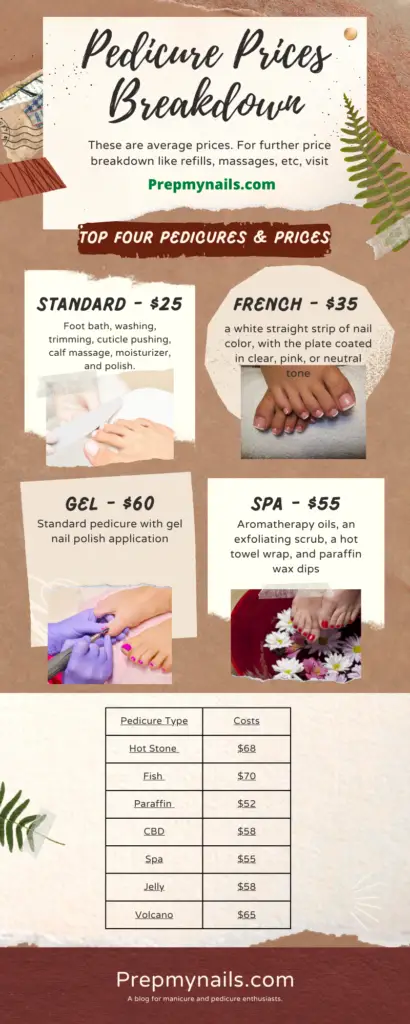
Four main factors determine how much you’ll spend on price in a first-world country: disposable income, location, age, and gender. Most people in countries such as The United States and Canada will drop anywhere from $40 to $50 for one pedicure
. However, finding an inexpensive pedicure is possible if you know where to look. In places like Spain and Italy, average prices can dip as low as $20 or less. If you’re willing to forego atmosphere or even sunlight at times (many salons are only open during business hours), price-conscious clients may be able to snag a deal.
Women can save money by scheduling their appointments with men—most salons offer discounts on male-only pedicures, commonly referred to as Manzilians.
Another way to save money is by tipping well. At the same time, your technician might make $25/hour before tips at most establishments in North America. Some salons pay their technicians less than minimum wage—sometimes just over 50% of minimum wage, depending on state laws.
Best Pedicure For Dry Cracked Feet
If you have dry, cracked feet, it is best to avoid getting pedicures. The chemicals in some nail polishes and foot baths can worsen your dry skin. Make sure that you request a chemical-free nail treatment so that your feet will be safe from any skin damage.
Also, having a pedicure too often will increase your risk of infection, so stick to one or two times per year. If you feel your toes are looking especially dry, try soaking them in warm water with Epsom salt before applying lotion and socks overnight.

This treatment should help soften up any dried-out areas on your skin while keeping them moisturized for days at a time.
However, if your cracking becomes painful or red patches appear around your nails, you might want to ask a doctor what you should do next. Calluses sometimes occur due to excessive pressure on certain parts of your feet.
It could be as straightforward as standing too long without taking breaks throughout the day or wearing tight shoes. When calluses build up enough dead skin cells above your existing ones, they become inflamed and painful.
They also become prone to infections, making it even more dangerous for you to get a pedicure altogether until things get better.
18 Types of Pedicure
Here are 18 types of pedicures:
1. Basic Pedicure
A classic pedicure, also known as a basic pedicure, is the most well-known and popular pedicure. It has no frills or gimmicks, especially for folks who want a quick, low-cost, no-hassle treatment. A regular pedicure is a standard pedicure that you will find in almost any salon.
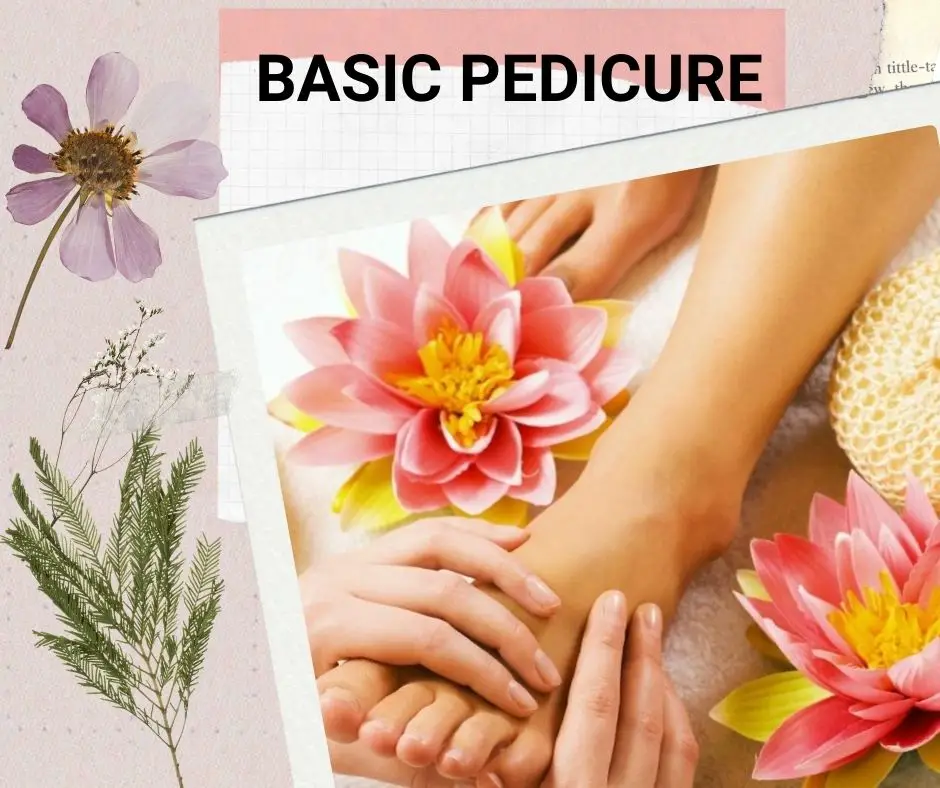
If you want your feet to be groomed and maintained regularly, this is the pedicure for you. It is the cheapest pedicure in the group. This pedicure begins with soaking both your feet in warm water then exfoliating them with a pumice stone.
The pedicurist will push back your cuticles, and they will trim and file your toenails. After that, your foot and calf will have a pleasant massage before they paint your nails.
2. French Pedicure
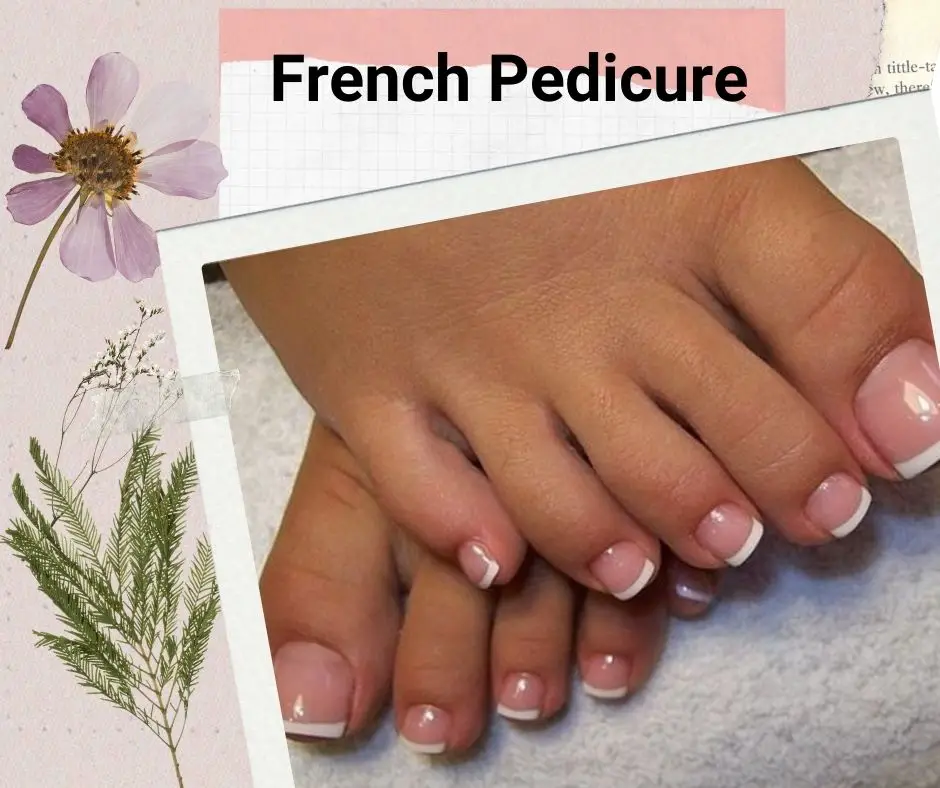
The primary method of a French pedicure is similar to that of a classic pedicure, with the exception of the application of nail polish.
A thin white band is applied to the tip of the nail to complete the look. The pedicurist will apply a transparent nude or pink lacquer to the base of the nail. One of the most popular pedicures is a French pedicure.
With the exception of how the pedicurist paints your toenails, it’s essentially identical to a standard pedicure. You’ve probably heard of the French manicure. It’s comparable to when you paint the tips of your toenails pure white while keeping the rest of your nails neutral. Your feet will appear clean and classy after this pedicure.
3. Pedicure For Athletics Or Sports
A special pedicure for athletes’ feet is known as an athletic pedicure. Running and other strenuous activities can harm an athlete’s feet, necessitating special attention to restore them to their former splendor.
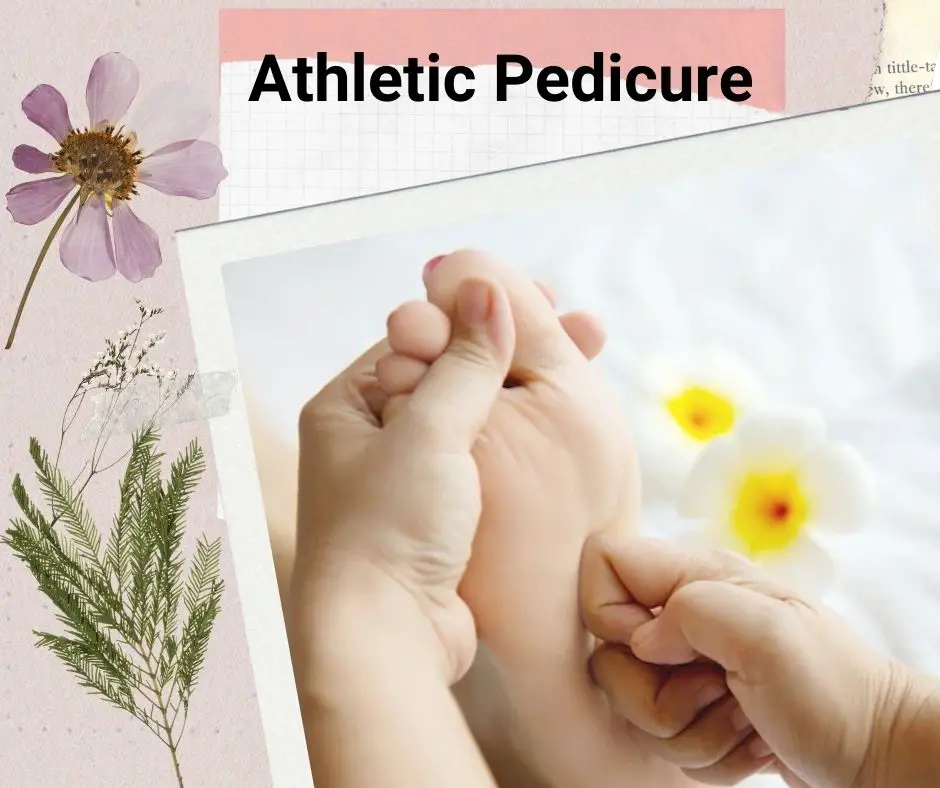
An athletic pedicure is a specialist treatment that focuses on relieving muscular tension and relaxing overworked feet by massaging the soles. In addition, a sports pedicure foot massage focuses on easing pressure points and restoring blood flow to the feet.
4. Pedicure With Gel
UV light technology is used in a gel pedicure to produce long-lasting nail color. It is more costly than a standard pedicure, but the core stages are the same.
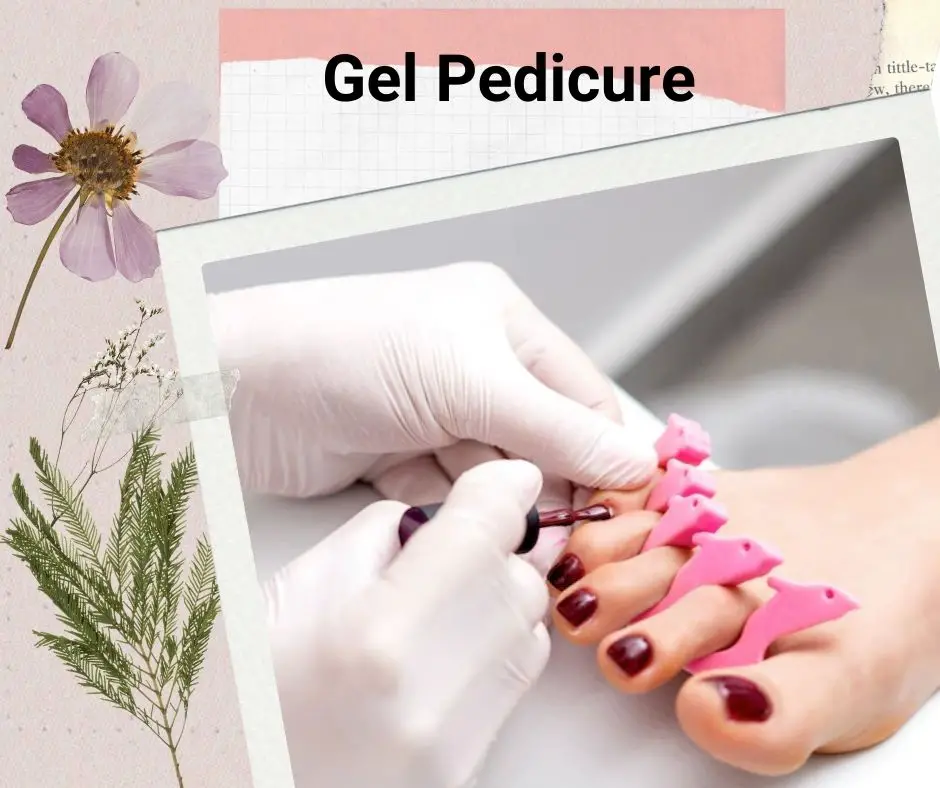
After the nails have been cleansed, trimmed, and filed, the pedicurist will apply gel polish in three layers: base coat, color, and topcoat.
An LED-light curing process follows every layer. Gel-based polishes are more durable and stay chip-free for extended periods. The effects might last anywhere between two and four weeks.
5. Pedicure With Margarita
You have to place your feet in a blend of salt scrub, fresh lime juice, and massage oil for the delicious-sounding margarita pedicure.
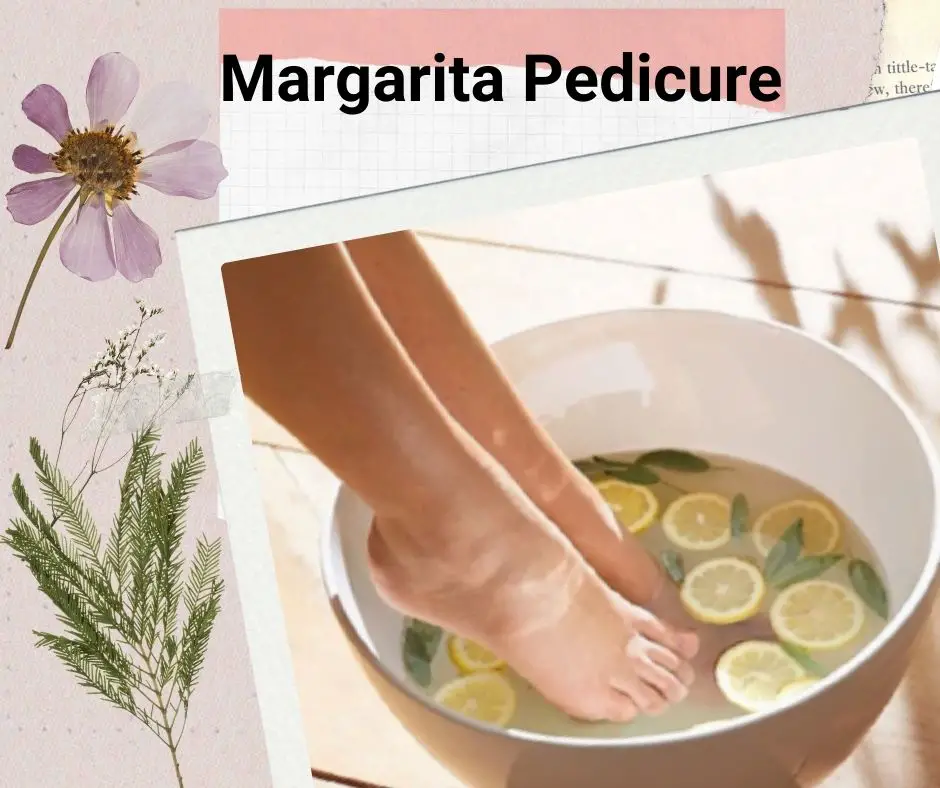
The pedicurist can also use lime slices to exfoliate the soles and calves. This zesty treatment comes to an end with a margarita-scented sugar scrub and a lime-scented moisturizer.
Limes are abundant in antioxidants and vitamin C, and they provide several health advantages whether consumed or used topically.
Vitamin C has long been used to cure wrinkles, UV damage, and pigmentation. This pedicure is beneficial to both your skin and toenails.
6. Pedicure Using Paraffin
A paraffin pedicure comprises the application of a paraffin wax bath to the feet to reduce discomfort. It’s a great way to enhance circulation and relax your muscles. It’s also effective for treating arthritis, joint fitness, and vigorous motion. Furthermore, the wax aids in the moisturization of the skin.
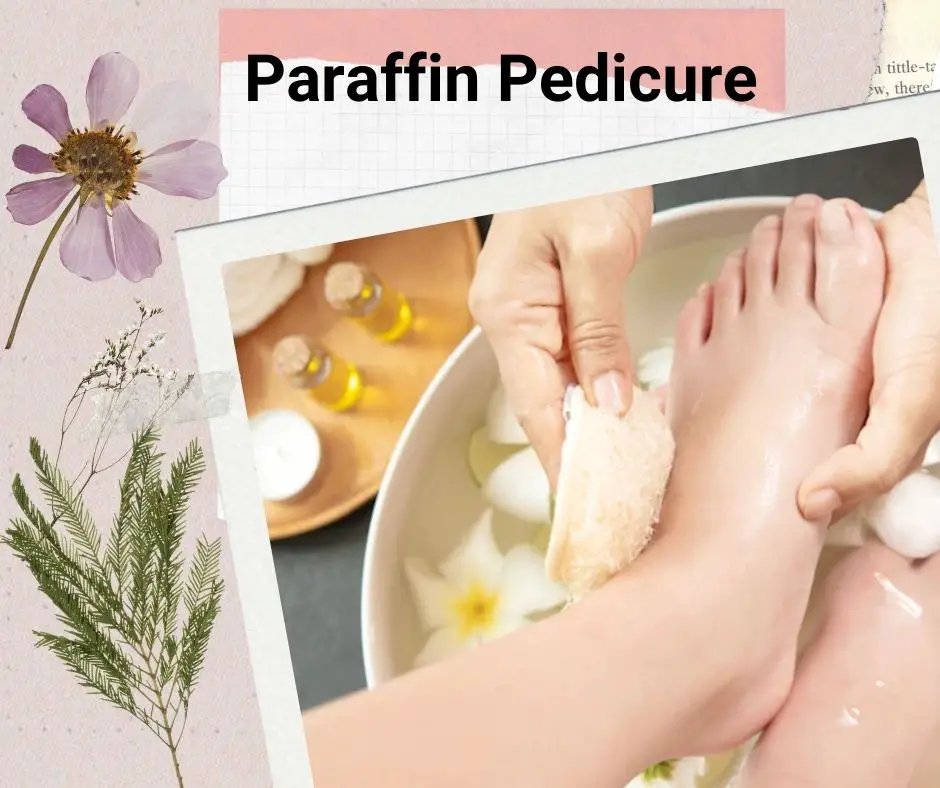
7. Hot Stone Pedicure
It is a type of pedicure that involves the use of hot stones. As the name implies, a hot stone pedicure employs hot stones to give pain relief and relaxation. It operates on the same concept as hot stone massage, which is a popular treatment for insomnia. The following are the steps in this pedicure treatment:
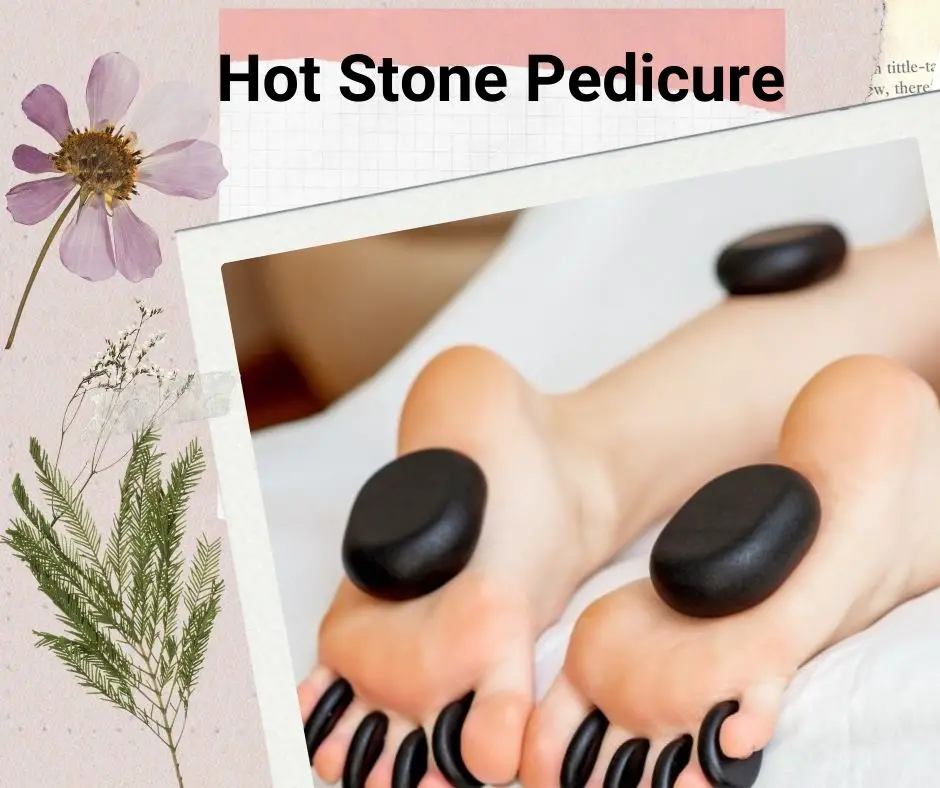
- The pedicurist will first bathe and disinfect your feet, and then they will clip your nails.
- On top of and beneath the feet are heated flat stones, such as basalt rocks. The heat from the pebbles helps relax muscles while also stimulating pressure points on your foot.
- Typically, the pedicurist will place hot stones on your feet for 10 to 30 minutes.
- After that, the pedicurist will rub oil into your feet.
- To complete the operation, nail polish is applied.
8. Pedicure With Fish
A fish pedicure, also known as ichthyotherapy, involves immersing the feet in a fish-filled basin or pool. Garra Rufa, the fish used in the pedicure, eats the dead skin off your feet, leaving you with softer feet and cuticles.
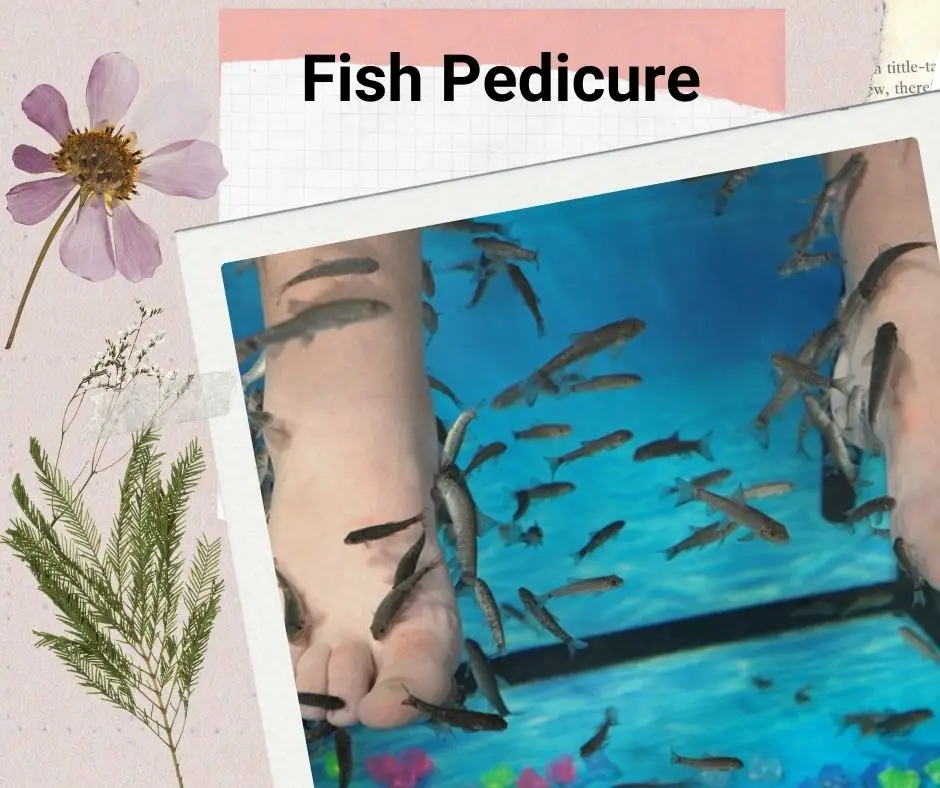
This form of pedicure provides several skin-care advantages, including psoriasis relief. However, further research in this field is necessary to determine the full efficacy of ichthyotherapy for the treatment of psoriasis.
Fish pedicure is an exciting way to treat your feet. It is rising in favor these days. It’s a technique that involves having small fish chew on your skin while giving you a lovely pedicure.
You will have to plunge your feet into a tank containing microscopic fish that will cluster around your feet and nibble at the dirt and dead skin cells. It is a chemical-free, sustainable method of treating your feet, and the dead skin of your foot serves as food for the fish. It’s a win-win situation for everyone.
9. Mini Pedicure
A mini pedicure is exactly similar to a regular pedicure; however, it concentrates on the toes. There is no massage or sole care included in this package. It just takes a few minutes to wet your nails, shape them, and apply a layer of varnish.
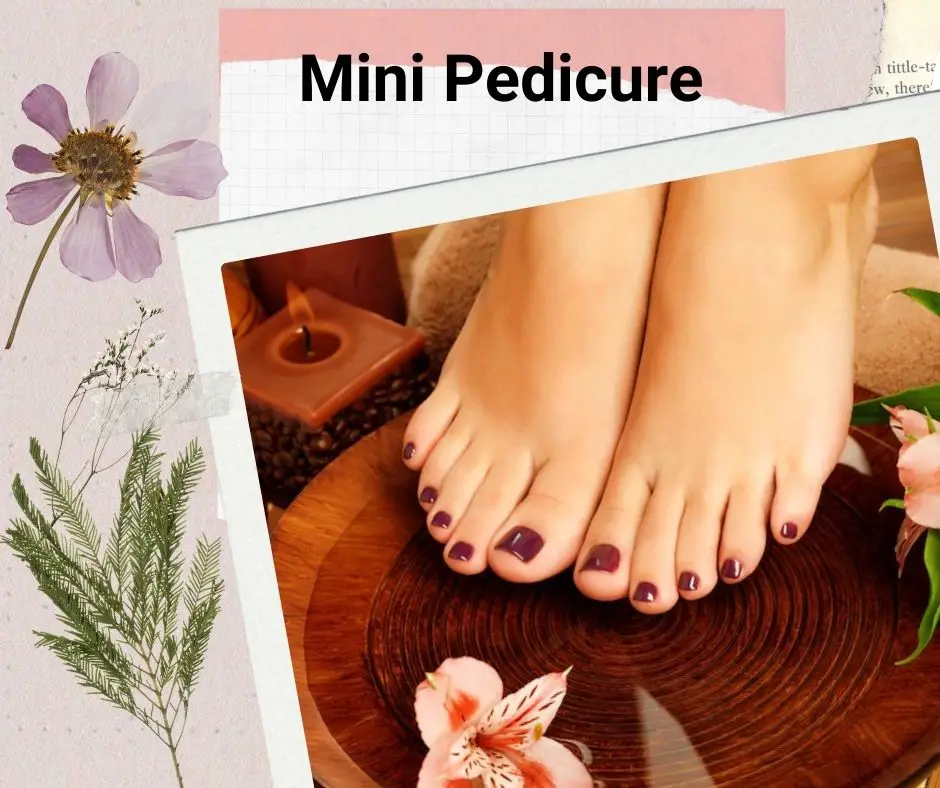
10. Spa Pedicure
A spa pedicure is a step up from a regular pedicure. A deluxe pedicure, also known as a premium pedicure, includes specialist treatments such as paraffin wax dips, mud masks, and seaweed treatments in addition to the regular pedicure. This more expensive pedicure may also contain specially prepared oils for specific skin types or issues.
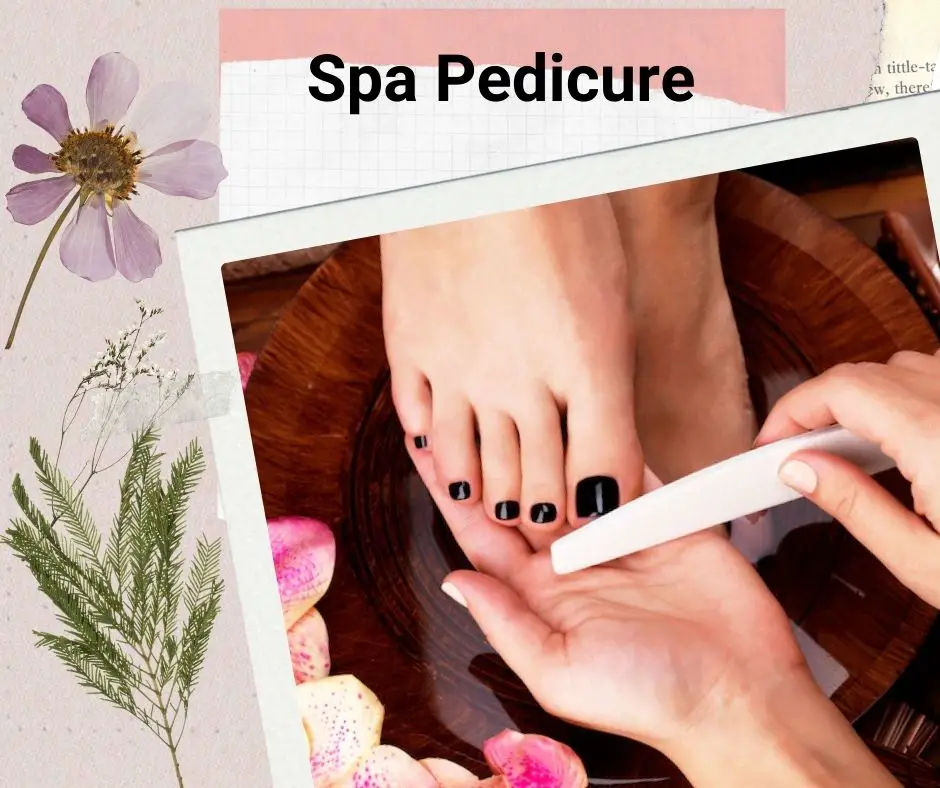
11. Pedicure With Ice Cream
Despite its unusual name, the ice cream pedicure does not include the application of actual ice cream to the feet. It does, however, make use of a bath ball in the shape of an ice cream scoop.
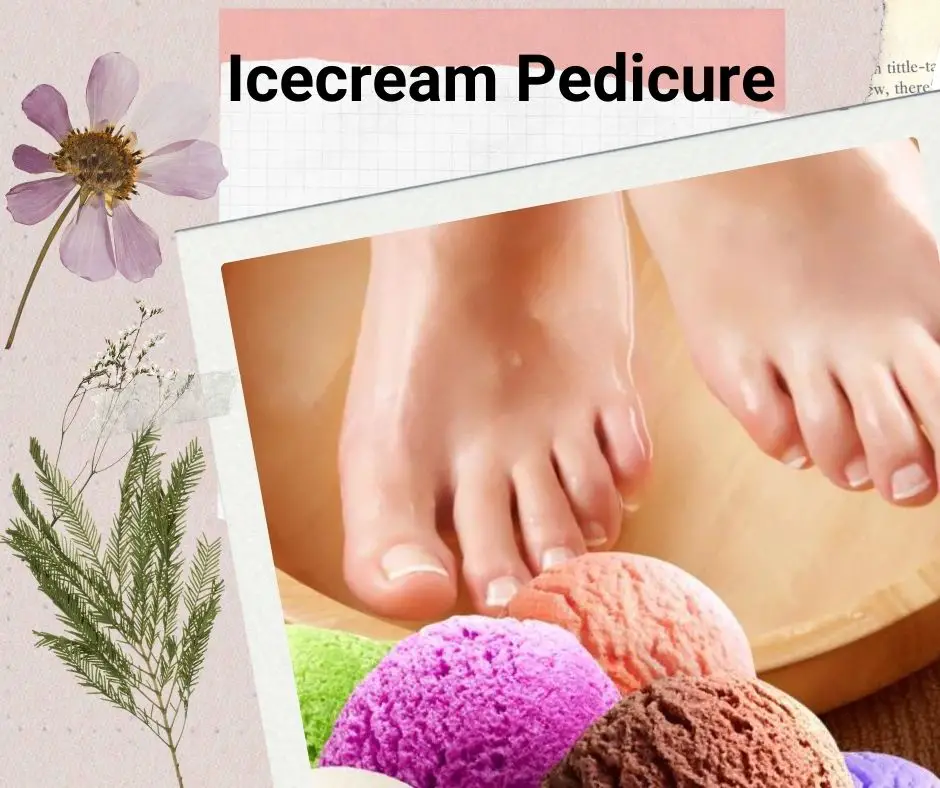
The ice cream balls usually comprise a combination of coconut, olive, or jojoba oils, offering unique moisturizing and skin-care characteristics. The post-soak foot washes used in an ice cream pedicure often contain the scent of chocolate, vanilla, or strawberry.
12. Pedicure With Salt
The first step in a salt pedicure is to soak your feet in a water bath packed with salt. The type of salt used might be sea salt, Himalayan salt, or Epsom salt. Epsom salt exfoliates dead skin from the foot thanks to its crystalline compound structure.
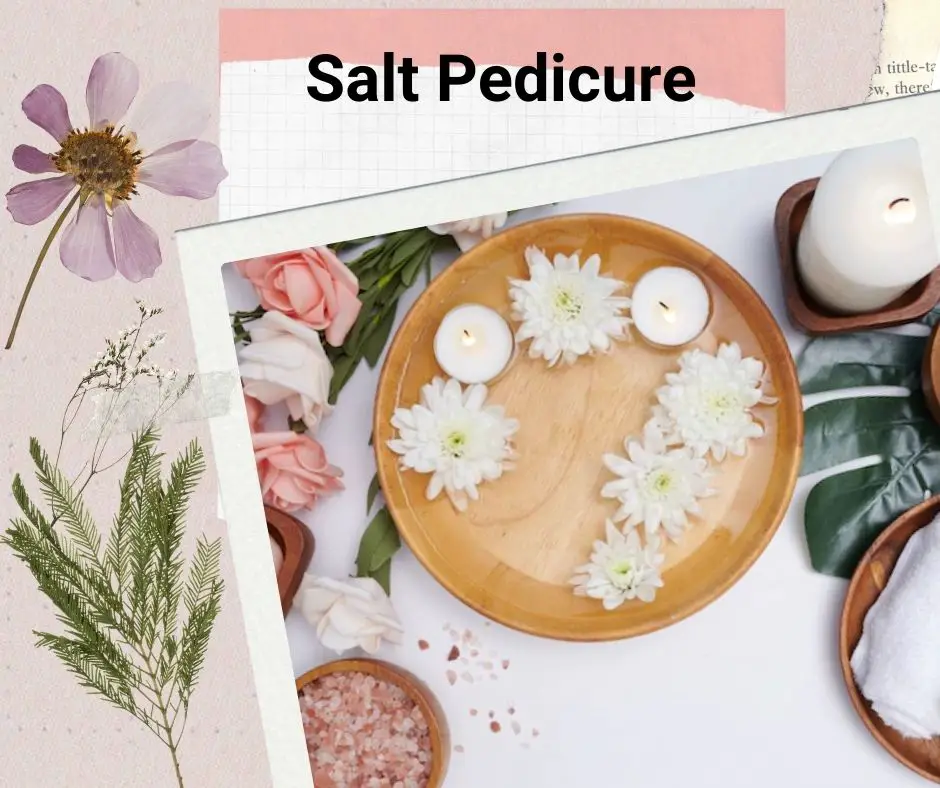
The foot soak may assist in softening the feet and reducing roughness. After bathing the feet, exfoliating using a tool to remove dead skin is a terrific idea. A pedicure with Epsom salts also helps to eliminate toxins from the body. Magnesium absorption through the skin can increase magnesium levels in the body and reduce inflammation.
13. Pedicure Without The Use Of Water
A waterless pedicure is an environmentally friendly treatment that does not include soaking your feet in the water. The rest of the pedicure steps are similar to a standard pedicure. The pedicurist will use an electric file to smooth the callus, shape the nails, and clean the cuticles.
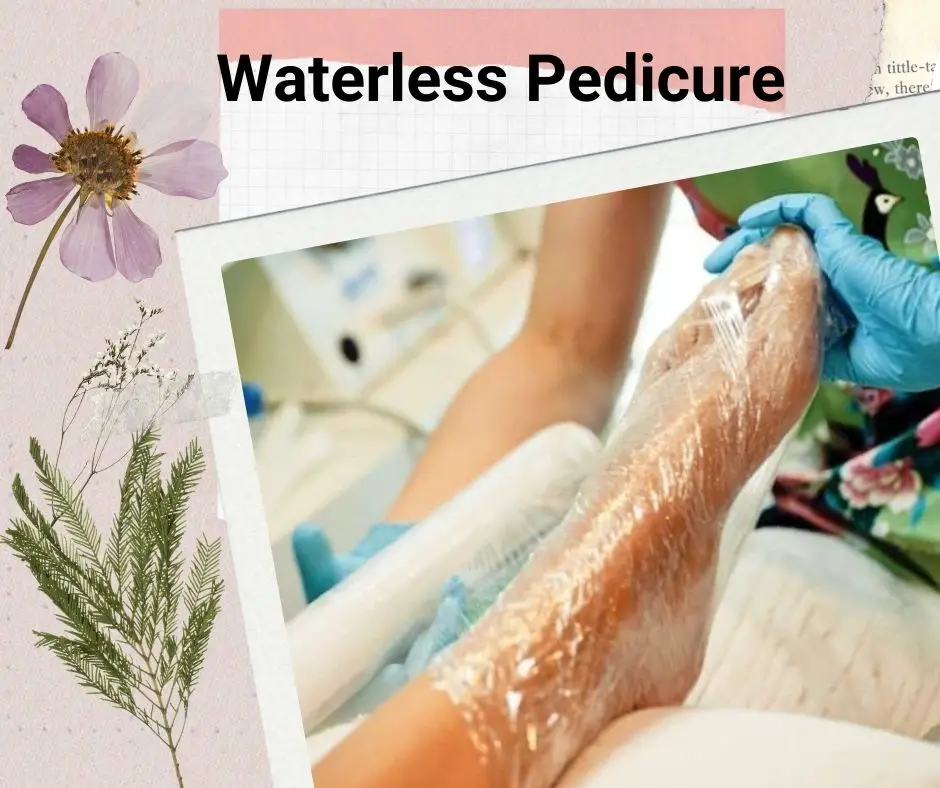
People frequently think of a waterless pedicure to be more efficient than a standard pedicure since it does not cause your toenails to expand as a traditional pedicure does. It ensures that your toenails are completely dry before applying nail paint.
14. Pedicure With Milk And Honey
The natural moisturizing characteristics of milk and honey help treat the foot in a milk and honey pedicure. Honey has emollient, humectant, and calming properties in cosmetic compositions. It protects the skin from wrinkles, aging, and infection.
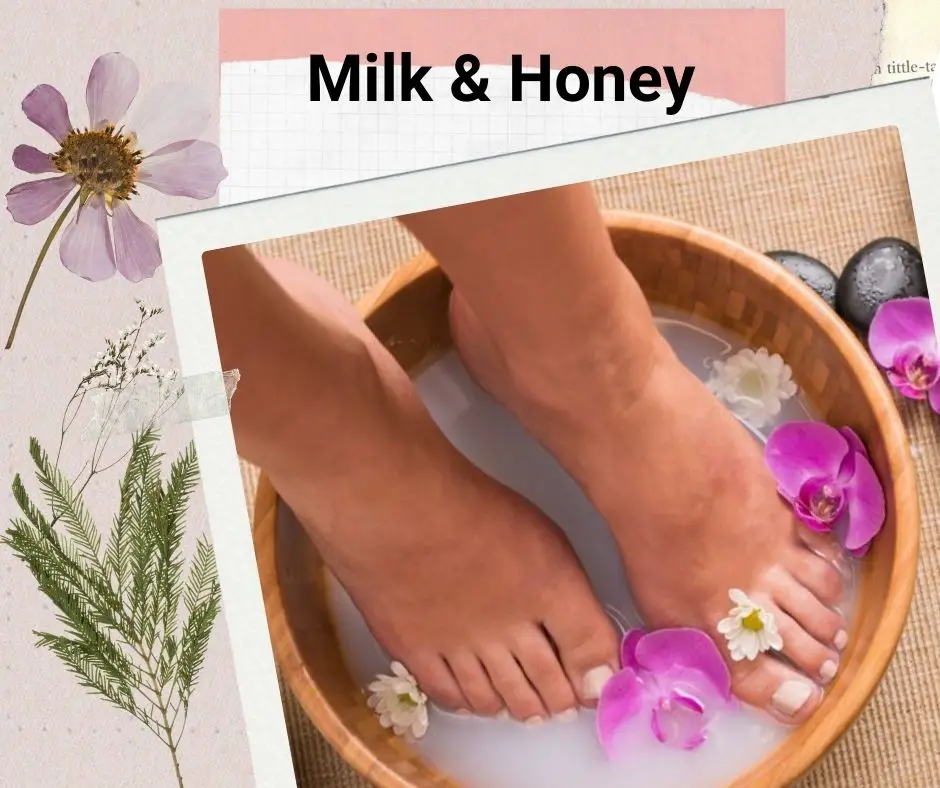
15. Pedicure With Wine
Instead of using water, a wine pedicure includes soaking the feet in wine. This form of pedicure is hugely beneficial for persons who want to give their feet an anti-aging therapy.
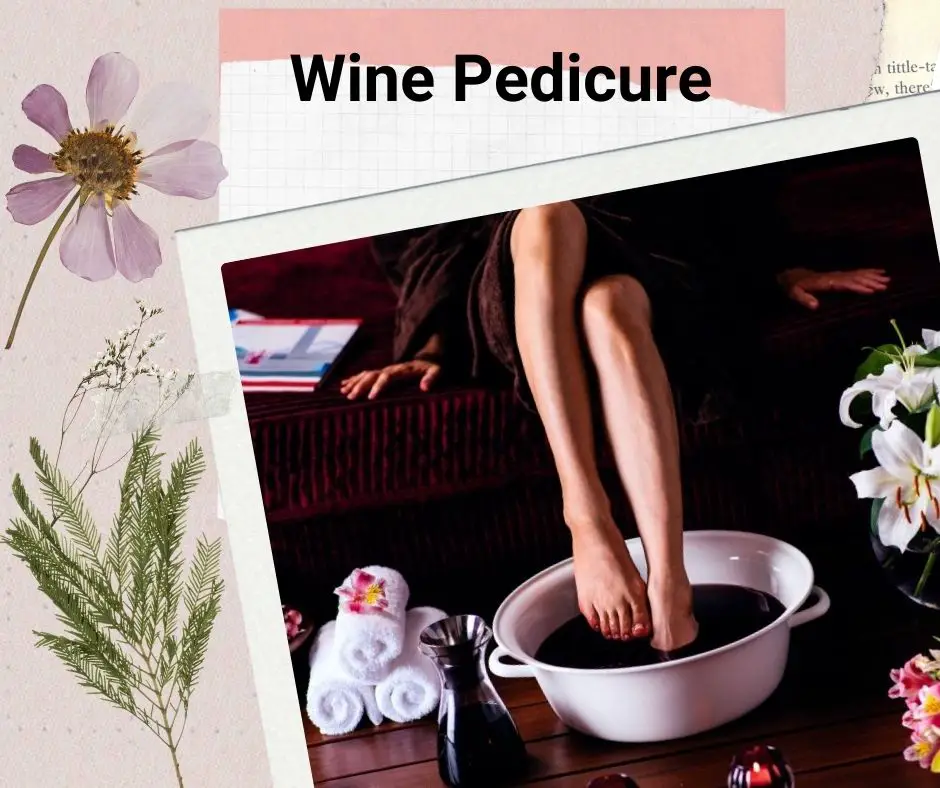
Resveratrol, a phytoalexin antioxidant present in red grape wine, is an effective antioxidant and anti-inflammatory for the skin.
16. Pedicure In Shanghai
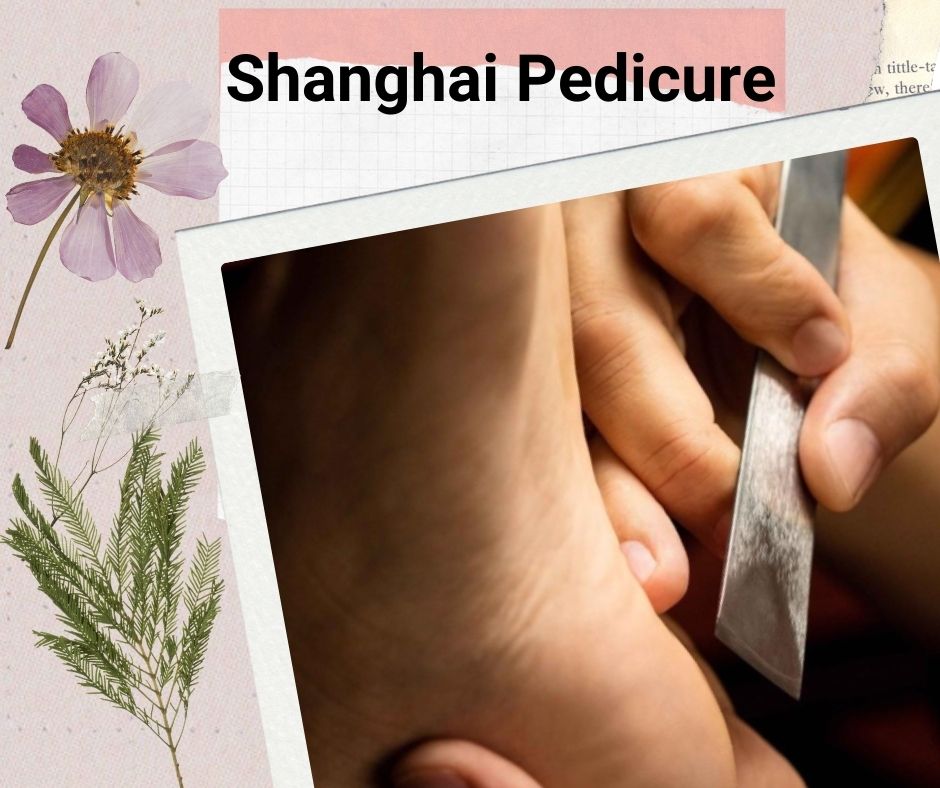
The Shanghai pedicure started in Hong Kong’s Mandarin Oriental Hotel. After bathing your feet in warm water for 50 minutes, the pedicurist will use scalpels to remove dead skin, calluses, and ingrown nails. To remove tough skin from the foot, master technicians utilize specially manufactured metal blades.
17. Chocolate Pedicure
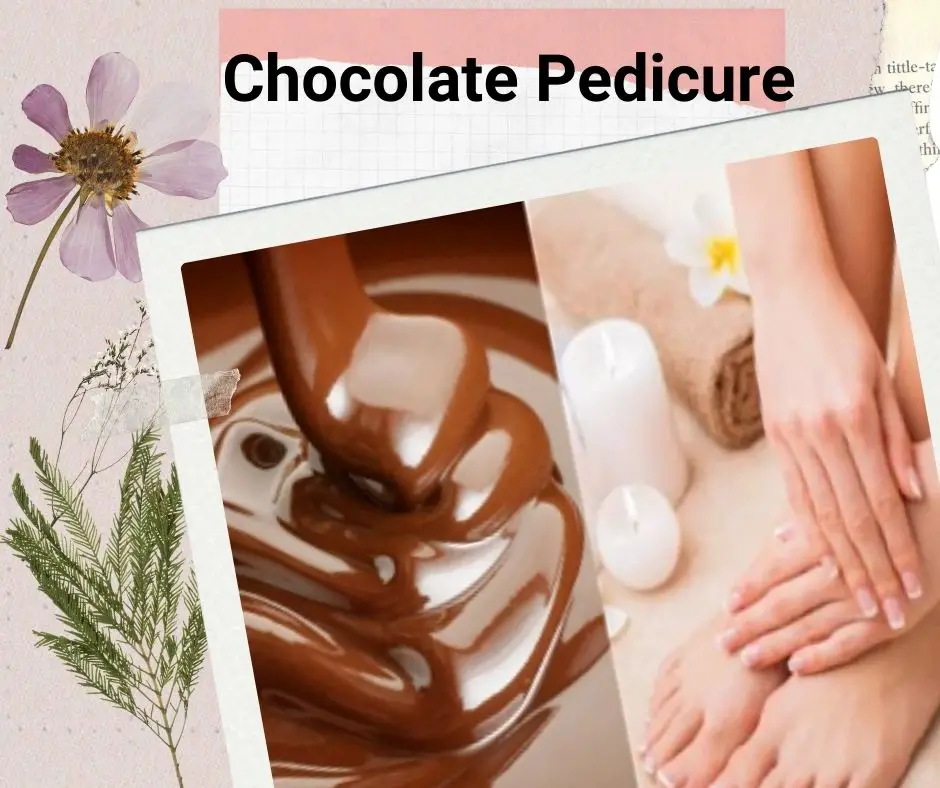
The processes involved with a chocolate pedicure may vary depending on where you go. A chocolate pedicure, on the other hand, often follows these steps:
- The treatment begins with a warm chocolate foot soak.
- After that, the pedicurist will use a chocolate scrub to exfoliate the feet.
- Next, they will use a cocoa butter-based lotion to hydrate the feet.
- Finally, they will apply your choice of nail paint.
18. Floral Pedicure
A flower pedicure is identical to a standard pedicure, except the water used to bathe your feet is different. The aroma of flowers is used in this pedicure to nourish and soothe your feet. It entails bathing your feet in warm water with flower petals incorporated in it.
Exfoliation with a petal scrub is followed by filing your toenails, pulling back your cuticles, and finally applying a flowery foot mask to comfort your feet. This pedicure ends with a soothing foot massage and a layer of nail polish.
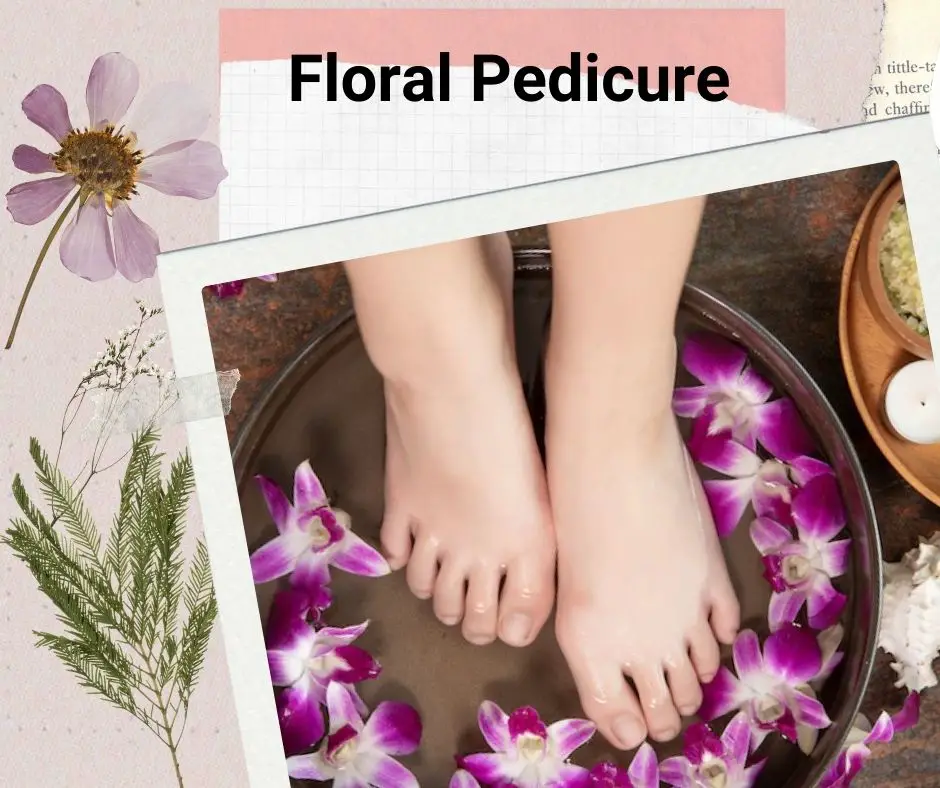
Can Pedicure Fix Ingrown Toenail?
A professional pedicure can help to fix an ingrown toenail. The therapist will use a variety of treatments, including hot water and salt, to soften and remove the dead skin cells that may have contributed to the ingrown toenail. They will also use a scrub or soap to clean the area and remove any dirt or debris. Finally, the therapist may apply a topical anesthetic and a numbing cream to help reduce any pain.
Can Pedicure Help Calluses?
Use sandpapers or a foot file to remove calluses gently. Rinse your feet, dry them well and apply a foot cream. The cream should soften up any remaining dead skin so you can shave off what’s left with an emery board or pumice stone.
To prevent calluses from returning, make sure always to wear shoes that fit well and provide good arch support for your feet (especially if you’re on your feet all day). If you need to remove dead skin from under your nails, don’t use nail polish remover — it may irritate sensitive skin, cause blisters, and potentially weaken nails even more.
Calluses can develop when you’re not walking around without shoes, so experts recommend regular pedicures. But there are other benefits too: Making sure your toes look lovely doesn’t just keep your self-esteem high, but it also makes others more willing to trust you and form closer connections with you—in other words, they help people like you better!
Can Pedicure Remove Corns?
If you wish to give yourself a pedicure treatment to remove corns, you should use a pumice stone or other foot files used for coarse dead skin removal; but if they don’t work alone, you might need professional help.
Can Pedicure Cause Nail Fungus?
First, it’s important to note that nail fungus is highly contagious. People get it by sharing tools or touching a person who has infected nails. You could also develop it from communal showers and nail clippers at nail salons.
The best way to avoid getting nail fungus while getting pedicures is to bring your clippers and disinfect them afterward—don’t be afraid to ask for clean ones. If you notice something wrong with your feet after receiving a pedicure, don’t just sit there—be proactive and address it quickly before anything spreads further!
How Is Pedicure Done At Salons?
Pedicure is a popular service that many salons offer. It is a preventive foot care service that includes the removal of dry skin, calluses, and other hard skin deposits. Pedicure also includes the application of foot cream and moisturizer, as well as the use of sandalwood or another foot scent.
It is typically at salons, where a therapist will clean and dry the skin, apply a foot cream, set the nails, and file the nails. The therapist may also use a scaler or a unique tool to remove calluses or other hard skin. Salons use a variety of techniques to perform a successful pedicure.
The most common method is dry pedicure, where they dry the feet with a cloth after being soaked in hot water. Another standard method is wet and dry pedicure, which uses hot water to soften the skin, and then a cream or lotion is applied. Many salons also offer a combo pedicure, which combines both methods. Last, the client receives instructions on caring for their feet at home.
How To Do Pedicure With At-Home Kit?
Before you begin the process, keep in mind that a pedicure can be an easy and cost-effective way to give yourself a nice treat. Not only will your feet appreciate you, but it could save you a lot of money over time by doing it yourself. Keep these solid tips in mind if you want to try out pedicures at home using an at-home kit.
- Use your leg as a guide for length when trimming cuticles for best results. Ensure all sections are equal in length before clipping them off.
- To get the cleanest cuticle line possible, use one hand to grip skin around nails and gently pull back while holding the cuticle trimmer flush against the nail edge with another hand.
- Once all nails have been clipped, apply callus shaver to rough spots. Be careful not to remove too much—you don’t want any hangnails!
- After removing calluses, apply callus softener; some kits come with rough heels treatment included. Take extra care on heels—this is where women experience thickened or cracked skin due to pressure and friction from shoes.
- When applying polish, always work in small circular motions rather than applying strokes vertically or horizontally—this will ensure even application without runs or streaks.
Details About Pedicure Tools
Foot File, Massage Stone, and Callus Remover: Their functions are similar. The only distinction is their shape and size. Usually, foot files, massage stones, and callus remover can be combined with an exfoliating cream or scrub that you use to get smooth feet.
They work great for people who have dry skin on their feet. Not many people realize how beneficial tools can be for your health until they give them a try.
You don’t need to buy a set of these tools because you will most likely only use them once in a while when you give yourself a pedicure at home or when you visit a salon to get your feet massaged and then shaped professionally by someone else using these tools.
It is best if you get a few different types to achieve your desired results as quickly as possible. If you are unsure of what type of tool works best for what purpose, it is best to consult experts before making a purchase?
It might also be wise to ask a friend or colleague whose toes look good enough to eat! A beauty professional would tell which tool she prefers over others, so make sure you know which ones work for dry, cracked heels and calluses, etc.
Before buying, make sure whatever brand or type is compatible with the pedicure product you want to use and whichever tool/tools come along with it before committing your money to anything yet!
How Often Should You Do Pedicure?
If you want to maintain your healthy foot, a pedicure is necessary. Your pedicurist can also show you how to care for your feet at home. You don’t have to do pedicures every month, but if your nails are very thick or discolored, you should get professional help.
Keep in mind that various places offer various services and prices, so you may be able to find a less expensive alternative if money is an issue for you. Your pedicurist will cut your nails and trim calluses from under your toes.
They will also remove dead skin using files and pumice stones before smoothing out rough patches with cream and softening them with lotion.
How Long Does Pedicure Take?
Pedicures do take time, but it’s often more relaxing than other types of salon treatments. When you schedule a pedicure appointment, you need to decide between an express or basic pedicure and a deluxe pedicure or manicure-pedicure combination.
Express takes about 30 minutes and includes shaping nails, cuticle work, nail polish application (one color), and foot massage.
Deluxe pedicures take an hour; besides everything from an express treatment, it includes callus removal and exfoliation with paraffin wax followed by another foot massage.
Because they’re more in-depth than express services, deluxe services may require additional fees—especially if your salon is outside a major city center where labor costs are higher.
What Pedicure Goes With French Manicure?
Many elements to a pedicure make it unique, from French pedicures to cute designs on your toes. But do you ever wonder what’s behind it all? What makes up a pedicure, and why is it important?
Take a closer look at what goes with a professional pedicure so you can be sure you’re getting high-quality care when you visit a salon.
First off, you should know there’s some confusion around terminology surrounding pedicures – both manicures and pedicures can include polish as well as shaping nails.
The steps are different for each service, but it’s safe to say there are similarities between both services if you decide not to go for polish during your appointment – like nail preparation, for example.
If you choose to polish, a technician will cleanse your nails, trim them if needed, and use an exfoliating scrub or callus remover tool followed by either a mask or sea salt treatment on rough areas before polishing.
Can You Do Pedicure When You Have Blisters?
The first query to ask yourself when trying to determine if you can have a pedicure when you have blisters is whether or not your blisters are too large for a pedicure.
If your blisters are more prominent than a dime, then it would be very uncomfortable for you to get your feet soaked and scrubbed because of all of the rubbing. If that’s the case, skip going in for a pedicure.
However, if your blisters are more minor than dimes, it would be okay to get one still because there’s not much rubbing involved with having them cleaned off with water and gel nails applied.
After getting your toes done and dried off, apply some blister treatments. Cover each blister individually with a bandage so that each blister has air around it, but no pressure from clothing or shoes will make them worse.
Blister treatment usually only takes two days; after two days, take off each blister bandage at bedtime and put on new ones in the morning to not rub against newly formed skin.
After about another week, you should stop using any bandages or protectors on your blisters and leave them alone; they’ll heal on their own after an initial burst of inflammation at day three.
Can You Do Pedicure When You Have A Wart?
It can be embarrassing when you have a wart on your foot, especially if it’s visible. People might think that you don’t care enough about your health and hygiene to remove it yourself, or even worse, they might think that you can’t afford to see a doctor for treatment.
But not only is there a cost-effective way to remove your wart at home; sometimes doing so can be easier than seeking out medical help.
DIY treatments may sometimes yield better results than what doctors offer and do with fewer side effects and discomfort. When you want an explanation about how to do pedicures for yourself with ease – use our easy steps: Get rid of your foot wart using lemon juice, baking soda, and cornstarch paste!
Can You Do Pedicure When You Have Athlete’s Foot?
An athlete’s foot is an infection caused by a fungus. Since athlete’s foot fungus lives in warm, moist places, getting a pedicure could make it worse. It’s easy to get an athlete’s foot by touching things contaminated with fungi, like the tools in a nail salon.
You don’t even need to contact someone who has it; transmission may also occur via towels used at public spas since multiple people usually share them over time.
